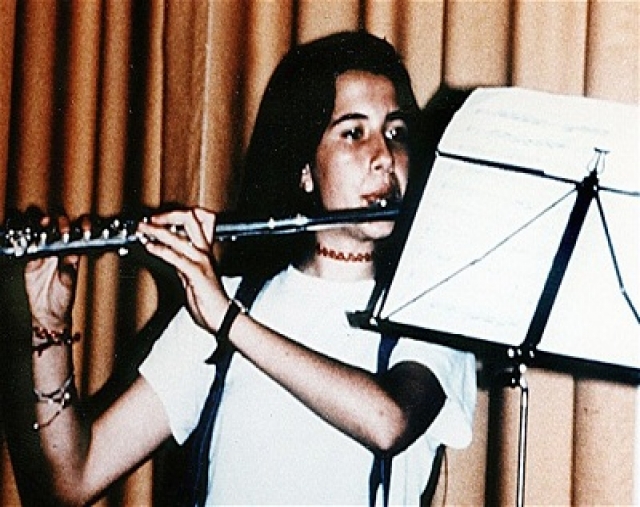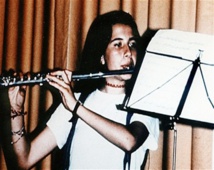Investigative journalist Emiliano Fittipaldi has now published a five-page document, dated March 28, 1998, listing Vatican expenses allegedly related to the case from 1983 to 1997 of more than 483 million Italian lira (about 407,000 dollars).
The document, published in Monday's La Repubblica daily, suggests money was spent on intelligence activities, trips to London by high-ranking Vatican officials, boarding fees at a London address, medical expenses at a London hospital, and several "transfers," including a final one to the Vatican.
The memo was stored in a Vatican safe that was burgled in March 2014 and is "credible looking," said Fittipaldi, who has written a book about his findings. Strangely, some of the stolen documents were returned by post to the Vatican about a month later, he added.
Fittipaldi said he could not vouch for the authenticity of the document. If the document proves to be a fake, the fact that it was held within Vatican walls suggests that it was fabricated with malicious intent by someone within the Vatican's inner circle.
"It is a shocking document" that "throws up questions that we should all try to answer, including the Vatican," Fittipaldi said in a press conference in which he urged the Vatican to investigate.
Pietro Orlandi, Emanuela's brother, has long accused the Vatican of withholding information and has invited Pope Francis to order authorities to be fully transparent on the case. On Monday, he wrote on Facebook that "The wall [of secrecy] is falling."
Vatican spokesman Greg Burke rejected Fittipaldi's paper as "false and ridiculous," while Cardinal Giovanni Battista Re, to whom the leaked memo is addressed, told the Stanze Vaticane blog that he had never seen it before.
Andrea Tornielli, a Vatican expert at the La Stampa newspaper, also considered it a "fake," spotting several errors: for example, the author uses the wrong formula to address Cardinal Re and another recipient of the memo.
If the document were true, "the Vatican should not be reformed, but closed down for good," so serious is the allegation that it was complicit to the Orlandi kidnapping, Tornielli said. "We are talking crimes so serious that they are worth of the Borgia era."
According to Tornielli, it is far more likely that it was "fabricated to mislead or to blackmail, mixing true or plausible details with others that are made up," in a sign that such practices are "thriving more than ever" at the Vatican.
Pope Francis was elected in 2013 in the wake of the VatiLeaks 1 scandal, stemming from the publication of confidential papers about alleged cronyism and infighting within the Vatican. A similar VatiLeaks 2 scandal broke out in 2015.
Both Fittipaldi and Tornielli said the Orlandi memo came from the archive of Monsignor Lucio Vallejo Balda, a Spanish priest convicted last year of leaking VatiLeaks 2 documents - although this does not mean he is behind the latest disclosure.
Fittipaldi, whose last book was based on VatiLeaks 2 material and was tried at the Vatican alongside Balda (but acquitted), the latest confidential memo seeping out of papal walls "could be the start of VatiLeaks 3."
---------------------------------------------------------------------------------------------------------------------------
The document, published in Monday's La Repubblica daily, suggests money was spent on intelligence activities, trips to London by high-ranking Vatican officials, boarding fees at a London address, medical expenses at a London hospital, and several "transfers," including a final one to the Vatican.
The memo was stored in a Vatican safe that was burgled in March 2014 and is "credible looking," said Fittipaldi, who has written a book about his findings. Strangely, some of the stolen documents were returned by post to the Vatican about a month later, he added.
Fittipaldi said he could not vouch for the authenticity of the document. If the document proves to be a fake, the fact that it was held within Vatican walls suggests that it was fabricated with malicious intent by someone within the Vatican's inner circle.
"It is a shocking document" that "throws up questions that we should all try to answer, including the Vatican," Fittipaldi said in a press conference in which he urged the Vatican to investigate.
Pietro Orlandi, Emanuela's brother, has long accused the Vatican of withholding information and has invited Pope Francis to order authorities to be fully transparent on the case. On Monday, he wrote on Facebook that "The wall [of secrecy] is falling."
Vatican spokesman Greg Burke rejected Fittipaldi's paper as "false and ridiculous," while Cardinal Giovanni Battista Re, to whom the leaked memo is addressed, told the Stanze Vaticane blog that he had never seen it before.
Andrea Tornielli, a Vatican expert at the La Stampa newspaper, also considered it a "fake," spotting several errors: for example, the author uses the wrong formula to address Cardinal Re and another recipient of the memo.
If the document were true, "the Vatican should not be reformed, but closed down for good," so serious is the allegation that it was complicit to the Orlandi kidnapping, Tornielli said. "We are talking crimes so serious that they are worth of the Borgia era."
According to Tornielli, it is far more likely that it was "fabricated to mislead or to blackmail, mixing true or plausible details with others that are made up," in a sign that such practices are "thriving more than ever" at the Vatican.
Pope Francis was elected in 2013 in the wake of the VatiLeaks 1 scandal, stemming from the publication of confidential papers about alleged cronyism and infighting within the Vatican. A similar VatiLeaks 2 scandal broke out in 2015.
Both Fittipaldi and Tornielli said the Orlandi memo came from the archive of Monsignor Lucio Vallejo Balda, a Spanish priest convicted last year of leaking VatiLeaks 2 documents - although this does not mean he is behind the latest disclosure.
Fittipaldi, whose last book was based on VatiLeaks 2 material and was tried at the Vatican alongside Balda (but acquitted), the latest confidential memo seeping out of papal walls "could be the start of VatiLeaks 3."
---------------------------------------------------------------------------------------------------------------------------









 Home
Home Politics
Politics











